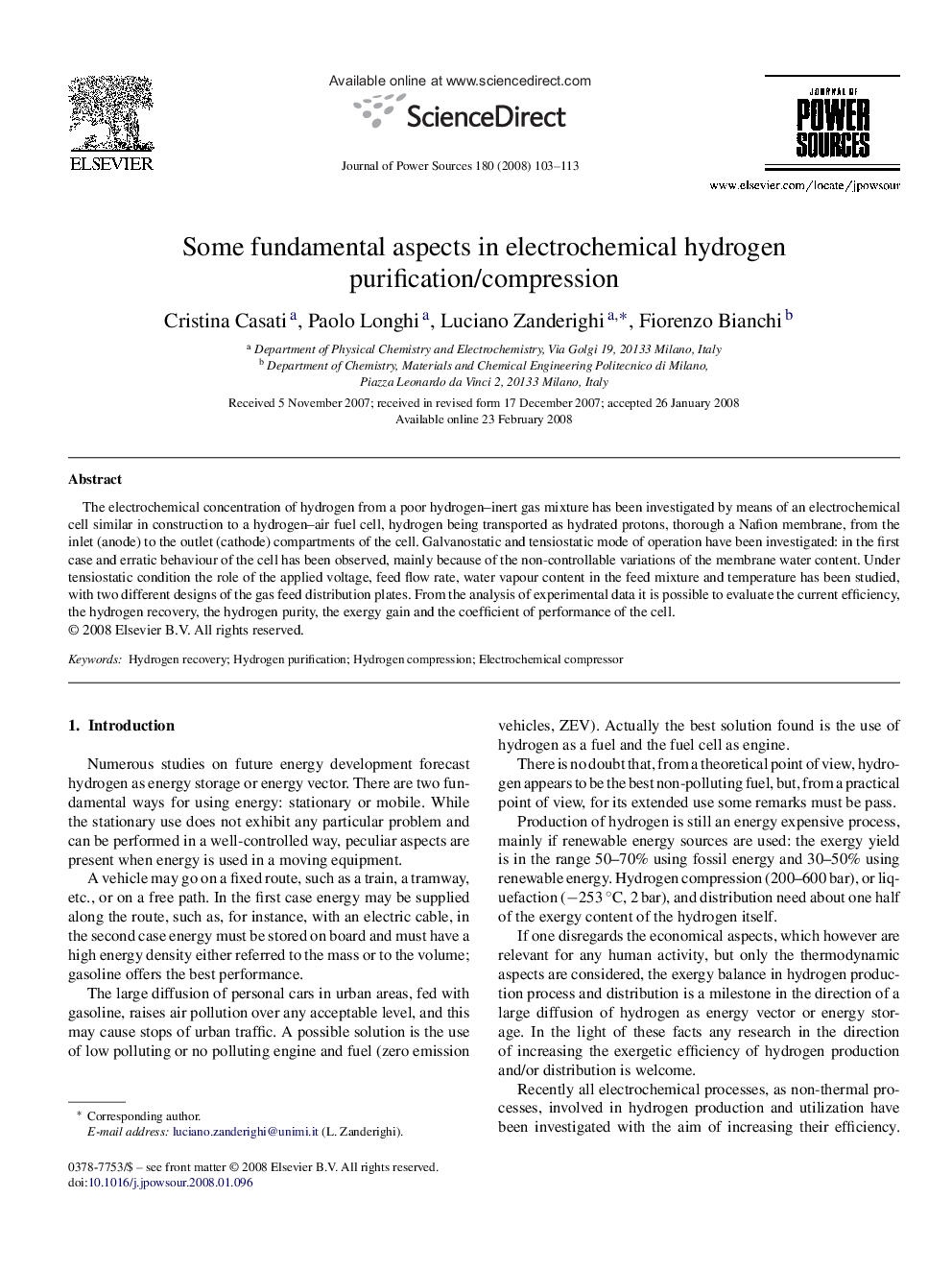| Article ID | Journal | Published Year | Pages | File Type |
|---|---|---|---|---|
| 1290549 | Journal of Power Sources | 2008 | 11 Pages |
The electrochemical concentration of hydrogen from a poor hydrogen–inert gas mixture has been investigated by means of an electrochemical cell similar in construction to a hydrogen–air fuel cell, hydrogen being transported as hydrated protons, thorough a Nafion membrane, from the inlet (anode) to the outlet (cathode) compartments of the cell. Galvanostatic and tensiostatic mode of operation have been investigated: in the first case and erratic behaviour of the cell has been observed, mainly because of the non-controllable variations of the membrane water content. Under tensiostatic condition the role of the applied voltage, feed flow rate, water vapour content in the feed mixture and temperature has been studied, with two different designs of the gas feed distribution plates. From the analysis of experimental data it is possible to evaluate the current efficiency, the hydrogen recovery, the hydrogen purity, the exergy gain and the coefficient of performance of the cell.
